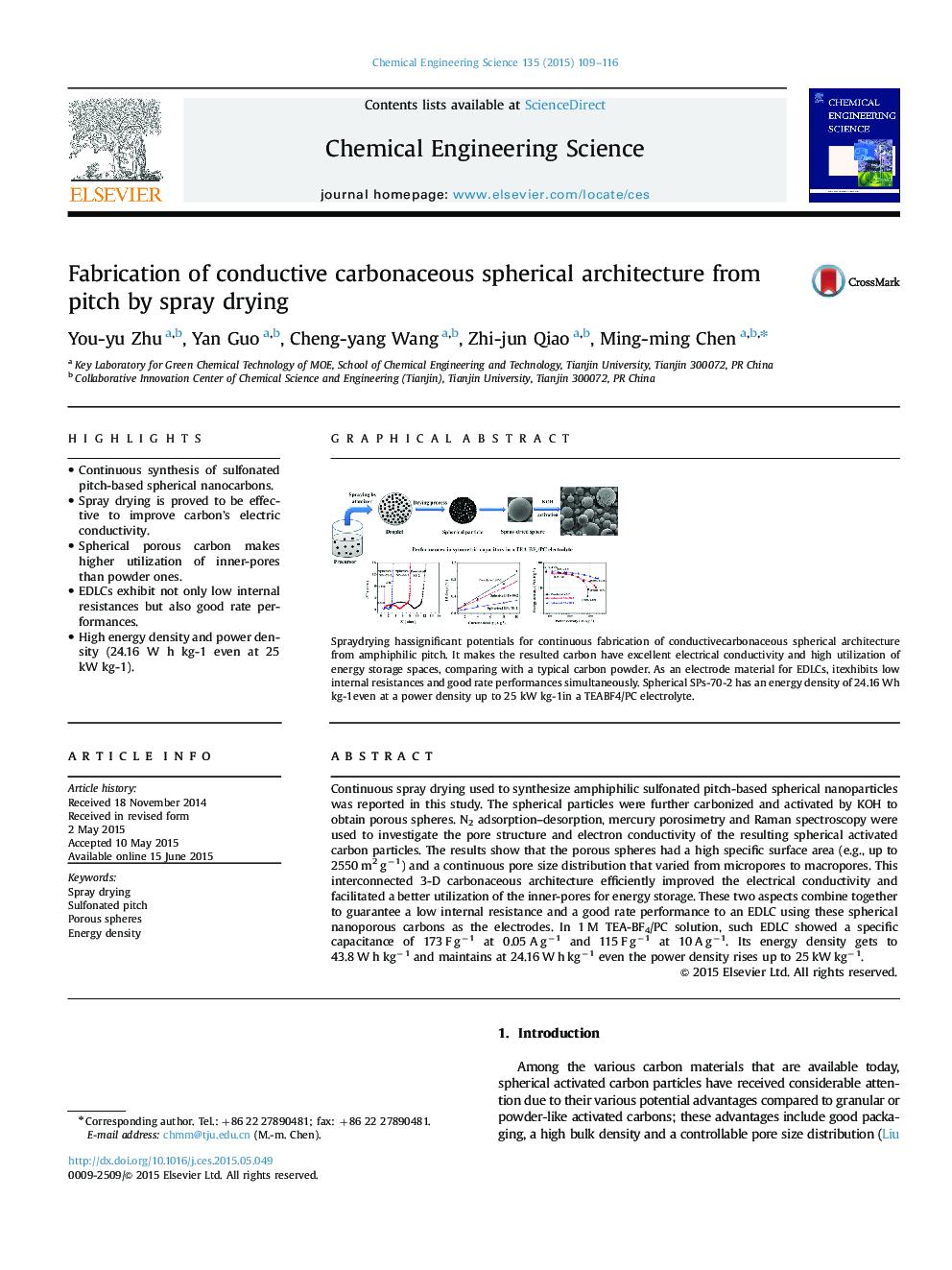| Article ID | Journal | Published Year | Pages | File Type |
|---|---|---|---|---|
| 154696 | Chemical Engineering Science | 2015 | 8 Pages |
•Continuous synthesis of sulfonated pitch-based spherical nanocarbons.•Spray drying is proved to be effective to improve carbon’s electric conductivity.•Spherical porous carbon makes higher utilization of inner-pores than powder ones.•EDLCs exhibit not only low internal resistances but also good rate performances.•High energy density and power density (24.16 W h kg-1 even at 25 kW kg-1).
Continuous spray drying used to synthesize amphiphilic sulfonated pitch-based spherical nanoparticles was reported in this study. The spherical particles were further carbonized and activated by KOH to obtain porous spheres. N2 adsorption–desorption, mercury porosimetry and Raman spectroscopy were used to investigate the pore structure and electron conductivity of the resulting spherical activated carbon particles. The results show that the porous spheres had a high specific surface area (e.g., up to 2550 m2 g−1) and a continuous pore size distribution that varied from micropores to macropores. This interconnected 3-D carbonaceous architecture efficiently improved the electrical conductivity and facilitated a better utilization of the inner-pores for energy storage. These two aspects combine together to guarantee a low internal resistance and a good rate performance to an EDLC using these spherical nanoporous carbons as the electrodes. In 1 M TEA-BF4/PC solution, such EDLC showed a specific capacitance of 173 F g−1 at 0.05 A g−1 and 115 F g−1 at 10 A g−1. Its energy density gets to 43.8 W h kg−1 and maintains at 24.16 W h kg−1 even the power density rises up to 25 kW kg−1.
Graphical abstractSpraydrying hassignificant potentials for continuous fabrication of conductivecarbonaceous spherical architecture from amphiphilic pitch. It makes the resulted carbon have excellent electrical conductivity and high utilization of energy storage spaces, comparing with a typical carbon powder. As an electrode material for EDLCs, itexhibits low internal resistances and good rate performances simultaneously. Spherical SPs-70-2 has an energy density of 24.16 Wh kg-1even at a power density up to 25 kW kg-1in a TEABF4/PC electrolyte.Figure optionsDownload full-size imageDownload high-quality image (247 K)Download as PowerPoint slide
